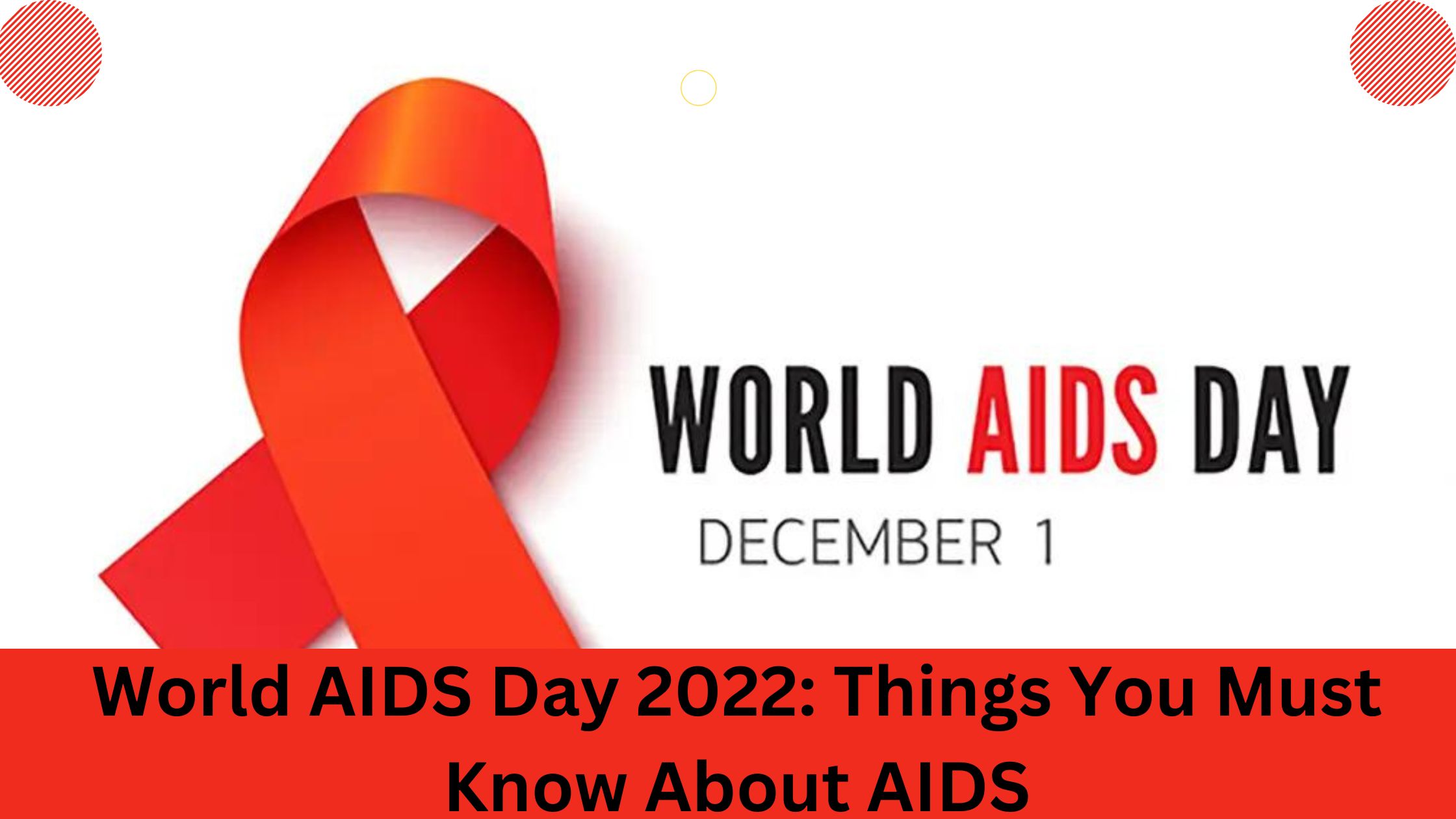
World AIDS Day 2022
Since 1988, December 1 has been celebrated as World AIDS Day. This is an international day to increase awareness of the AIDS pandemic, caused by the spread of HIV infection, and to honor those who have lost their lives affected by the disease.
Human Immunodeficiency Virus (HIV) is a fatal disease known as Acquired Immune Deficiency Syndrome (AIDS) (HIV). The HIV virus targets the patient’s immune system, weakening its defenses against other “diseases.” Around the world, non-governmental organizations, government and health officials, as well as individuals, celebrate the day, frequently by providing AIDS prevention and control education.
One of the most significant global public health concerns in recorded history, AIDS is projected to have killed 36.3 million people between [27.2 million to 47.8 million] people globally as of 2020, while an estimated 37.7 million people are living with HIV. The death rate from the AIDS epidemic has reduced by 64% from its peak in 2004 thanks to recently increased access to antiretroviral medication in many parts of the world (1.9 million in 2004, compared to 680 000 in 2020).
Themes
All World AIDS Day campaigns center on a particular subject that was selected after negotiations with UNAIDS, WHO, and a significant number of local, national, and international organizations engaged in HIV/AIDS prevention and treatment. Since 2008, the World AIDS Campaign’s Global Steering Committee has picked the annual topic (WAC).
“Stop AIDS. Keep our promise” was the motto of each World AIDS Day from 2005 to 2010, achieving universal access to HIV/AIDS prevention, treatment, care and support by 2010. It was intended to inspire political leaders to deliver on their promise to do so.
Starting in 2012, the multi-annual theme of World AIDS Day is ‘Zero new HIV infections. No AIDS-related deaths. No discrimination’. U.S. federal law states “Focus, Partners, Reach:
The theme for 2014 is “Generation without AIDS”.
The themes will be used throughout the year in international HIV/AIDS awareness efforts in conjunction with other major international gatherings such as the G8 Summit and regional campaigns such as the UK’s Student Stop AIDS Campaign.
Some interesting facts
- Some diseases and viruses have no known cures in the entire world. AIDS and HIV are remained incurable in the 1980s. If not, they can regulate this sickness with several types of medications. It is impossible to eradicate all disease. Therefore, even if AIDS infected individuals cannot cure the illness, there is a chance that they will live for about 12 years with the help of medications. When AIDS appeared and no cure could be found even after 40 years, it can be seen that the virus is obstinate. A vaccine could be developed in a year for a virus like Corona.
- Viruses like Corona are hard to avoid, but they can cause AIDS. We can avoid HIV.
- In 1980, the whole nation was afraid of AIDS. They thought the end of the era had come. At that period, government showed the abundance of horrible advertisements regarding AIDS. People were offended by seeing that type of advertisements.
- If the AIDS virus enters the body, it decreases the immunity of people. Therefore, those infected with this virus try to increase their immunity. They try to live longer by using proper medicines. Those who are accidentally infected with this disease, need not to fear. By using medicines, following the suggestions of doctors. you can live as usual.
- No matter how much it is managed, AIDS is still troubling the countries of the world. It is not completely abolished.
- In order to increase public awareness about this disease every year, the World Health Organization (WHO) first held World AIDS Day in 1988. This was four years after the discovery of the disease virus. Till now more than 3.5 crore people have died due to AIDS. At present, 15 lakh people are using drugs for AIDS every annual.
- South Africa has the highest number of AIDS cases in the world. So far 77 lakh people have been infected there and 71 thousand people have died. There, international countries and voluntary organizations are conducting AIDS awareness programs on a large scale.







